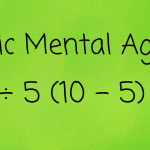Test your IQ with these deceptively easy math problems.Deceptively Easy Math Problems
Quiz: Crack 3 Deceptively Easy Math Problems
Are you ready to put your math skills to the test? Look no further than our quiz, Crack 3 Deceptively Easy Math Problems. These problems may seem simple at first glance, but don't be fooled - they require careful attention and a solid understanding of basic math concepts.
Challenge yourself and see if you can solve all three problems correctly. Don't worry if you get stuck - we provide hints to help guide you in the right direction. And if you're really struggling, we even offer the option to reveal the answer.
But don't cheat yourself out of the satisfaction of solving these problems on your own. Take your time, think critically, and see if you have what it takes to crack these deceptively easy math problems.
So what are you waiting for? Put your math skills to the test and take our quiz today!





